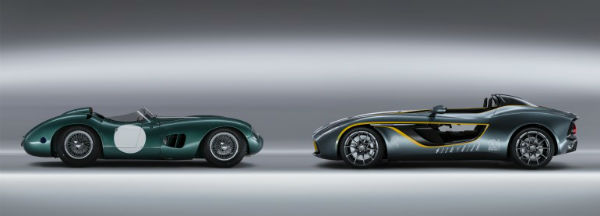 Intel may be about to ditch the Atom brand after five years on the market. The company told CNET that its next generation Silvermont chips will be use the Pentium and Celeron brand, and it has an explanation for the move, sort of.
Intel may be about to ditch the Atom brand after five years on the market. The company told CNET that its next generation Silvermont chips will be use the Pentium and Celeron brand, and it has an explanation for the move, sort of.
Author: Eva Glass
Software bloke ages bourbon in a week
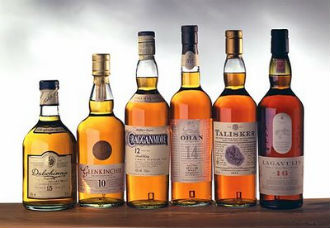 Good American bourbon was never easy to make. First a sour mash is fermented, distilled into a clear spirit and then it is place in oak barrels to age for at least three years, but the good stuff usually ages long enough to hit puberty, or even longer.
Good American bourbon was never easy to make. First a sour mash is fermented, distilled into a clear spirit and then it is place in oak barrels to age for at least three years, but the good stuff usually ages long enough to hit puberty, or even longer.
IDC predicts more PC gloom
 If you thought 2012 was a bad year for the PC industry, think again. Worldwide PC shipments are expected to fall by 7.8 percent this year, according to the latest IDC forecast. The forecast can be summed up in a single trend – consumers aren’t upgrading their PC boxes because they’re saving cash for tablets and smartphones.
If you thought 2012 was a bad year for the PC industry, think again. Worldwide PC shipments are expected to fall by 7.8 percent this year, according to the latest IDC forecast. The forecast can be summed up in a single trend – consumers aren’t upgrading their PC boxes because they’re saving cash for tablets and smartphones.
In fact, the outlook has been revised downwards. It was originally believed that the PC market would decline 1.3 percent in 2013, followed by a slight rebound. The new outlooks sees a 7.8 drop in 2013 and a 1.2 percent decline in 2014, with shipments recovering to 333 million units in 2017, still below the 349 million shipped last year and 363 million shipped in 2011.
It is hardly surprising, as even Intel executives are admitting that there is practically no incentive to upgrade at the moment. There is no compelling hardware and Microsoft hasn’t exactly done a brilliant job with Windows 8. The mature PC market is trying to put up a fight against the tablet onslaught and it is taking a beating.
“As the market develops, usage patterns and devices are evolving,” said Loren Loverde, Program Vice President, Worldwide Quarterly PC Trackers at IDC. “Many users are realizing that everyday computing, such as accessing the Web, connecting to social media, sending emails, as well as using a variety of apps, doesn’t require a lot of computing power or local storage. Instead, they are putting a premium on access from a variety of smaller devices with longer battery life, an instant-on function, and intuitive touch-centric interfaces. These users have not necessarily given up on PCs as a platform for computing when a more robust environment is needed, but this takes a smaller share of computing time, and users are making do with older systems.”
Things could pick up next year, as support for Windows XP expires and businesses rush to upgrade. However, the average consumer probably won’t rush to replace an old PC. The update cycle is getting longer and longer. Another worrying trend is the BYOD phenomenon, which allows users to use their own gear in the workplace, thus delaying and reducing the volume of corporate PC purchases.
One has to wonder what will happen to average selling prices and margins over the next couple of years. Businesses replacing turn of the century XP boxes will probably look for the cheapest possible solutions. At the same time, demand in mature markets will continue to decline for the foreseeable future, while demand in emerging markets should start to recover next year. Emerging markets also tend to prefer cheaper devices, which means the era of “goon enough” computing is here to stay.
The enthusiast market has always been a bastion for high-end component makers, but it seems to be running out of steam as well. New CPUs and GPUs don’t deliver huge performance gains seen in past generations, yet they’re getting pricier. Affordable 4K screens are still years away and new consoles are about to hit retail, disturbing the PC gaming landscape further.
Man squanders million quid with a little help from Nigeria
 The brother of a Lotto winner has managed to squander a million pounds in just five months, thanks to some rather unwise investments and a little help from Nigerian scammers. Denis Ryan, a 51-year-old road sweeper was given £1,000,000 by his brother Dave Dawes, who won a £101 million jackpot in 2011.
The brother of a Lotto winner has managed to squander a million pounds in just five months, thanks to some rather unwise investments and a little help from Nigerian scammers. Denis Ryan, a 51-year-old road sweeper was given £1,000,000 by his brother Dave Dawes, who won a £101 million jackpot in 2011.
Tesla to launch cheap electric car in four years
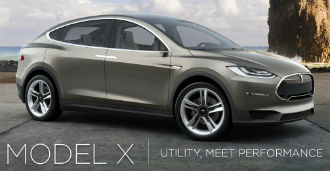 Tesla is planning to introduce a much cheaper electric car aimed at mainstream consumers. So far Tesla has focused on upmarket designs, like the sporty Roadster and Model S. However, with the upcoming quasi-hatch Model X it tried to tap a lower end market.
Tesla is planning to introduce a much cheaper electric car aimed at mainstream consumers. So far Tesla has focused on upmarket designs, like the sporty Roadster and Model S. However, with the upcoming quasi-hatch Model X it tried to tap a lower end market.
Store stays as hub for connected customers
 A pan-European retail survey commissioned by Fujitsu reveals that most retailers believe stores are still important despite the fact that online shopping is going mainstream.
A pan-European retail survey commissioned by Fujitsu reveals that most retailers believe stores are still important despite the fact that online shopping is going mainstream.
Even in the age of multichannel, 65 percent of Europear retailers interviewed said they believe the importance of stores is rising rather than diminishing. However, eight out of ten believe online is the top distribution model for the future.
The survey found that the humble store will continue to serve as a hub for retail engagement with “connected” consumers. Ongoing competitive pressures and the widespread adoption of smartphones will force retailers to combine the efficiency of online, while at the same time delivering a good in-store customer experience.
It echoes the findings of a recent Google survey, which concluded smartphones are slowly starting to improve the shopper experience both at home and in actual retail stores. In other words, retailers cannot afford to ignore either component of their multichannel approach. Fujitsu’s survey also stresses the importance of a unified view of all customers across all channels, on top of technology innovations designed to deliver new multichannel solutions.
Retail managers in some countries believe the importance of stores is going up, especially in France and to some extent in Italy, which is also betting on hypermarket and supermarket models. However, German retailers believe online shopping is currently more attractive to their customers. In the UK, however, there is a greater balance across all models.
“It is clear the store remains the shopping ‘hub’ for the majority of consumers across Europe, but the store operating model is changing rapidly to meet the needs of the multichannel shopper.” said Richard Clarke, Vice-President, Global Retail at Fujitsu. “Fujitsu helps retailers to achieve this goal by simplifying their technology deployments and radically increasing agility and customer intimacy.”
Although e-taliers and m-commerce are still on the rise, the study found that traditional retailers are still convinced there is plenty of room for brick-and-mortar stores in the future of retail, no matter how connected it might be. However, service is slowly becoming a key value-add for the store, and some hybrid services such as click and collect are also emerging. Interestingly, British retailers lead the way when it comes to their confidence in traditional stores and their role as a shopping point.
Cloud integration platform spending to soar
 Cloud integration is one of the hottest tech trends around and spending on cloud-based services is set to continue for years to come.
Cloud integration is one of the hottest tech trends around and spending on cloud-based services is set to continue for years to come.
Ovum predicts worldwide spending on cloud integration platforms will grow at a compound annual growth rate of 31 percent between 2012 and 2018. It is expected to hit $3.7 billion by the end of 2018.
Spending in America will grow at 27 percent, while EMEA should see a rate of 34 percent. Spending on cloud-based integration platforms in the UK and Ireland should grow even faster, at a CAGR of 36 percent, eventually reaching $170 in 2018. Other parts of Western Europe, such as Benelux and DACH regions will grow at 32 and 36 percent.
Ovum senior analyst Saurabh Sharma said the emergence of integration-as-a-service ushers in a new era – “middleware-as-a-service”. He pointed out that such services are focused on enabling faster SaaS integration at a lower cost of ownership, reports Cloud Pro.
“Integration-platform-as-a-service (iPaaS) is an extension of the functionality provided by [integration-as-a-service]. iPaaS solutions enable users to create, manage, and govern integration flows connecting a wide range of applications or data sources,” he said.
Sharma said most organisations originally adopted iPaaS as a tool to achieve SaaS integration, but eventually extended it to on-premise and B2B integration.
Nissan recalls 841,000 cars
 Nissan said that it is planning to recall 841,000 vehicles worldwide due to a faulty steering wheel. The recall will affect thousands of Micras, Qashqais and Cubes. But Nissan is trying to downplay the problem, but then again it would, wouldn’t it?
Nissan said that it is planning to recall 841,000 vehicles worldwide due to a faulty steering wheel. The recall will affect thousands of Micras, Qashqais and Cubes. But Nissan is trying to downplay the problem, but then again it would, wouldn’t it?
Although a faulty steering wheel does sound a bit alarming in case you’ve grown overly attached to your limbs, the company claims there is no danger of sudden failure. It seems that the culprit was a simple bolt used to secure the steering wheel and it can be sorted out with a bit of elbow grease, or quick replacement of the entire unit. In any case Nissan says the fix should take less than 20 minutes and the recall is voluntary, which means most cars will be sorted out during routine inspection.
None of the affected cars have been involved in crashes due to faulty steering and Nissan claims drivers should notice if their steering wheel starts to go loose. It will not fail catastrophically, or at least that’s what Nissan is betting on.
Although it doesn’t sound too scary, it is more bad PR for the company, as Nissan was already forced to recall 500,000 vehicles earlier this year due to an airbag defect.
Bloke comes up with pear brandy ice cream
 A small Croatian sweet shop located in the picturesque town of Beli Manastir has come up with a rather innovative take on ice cream. Shop owner Ismet Alija has stirred up something special – what appears to be the world’s first pear brandy ice cream.
A small Croatian sweet shop located in the picturesque town of Beli Manastir has come up with a rather innovative take on ice cream. Shop owner Ismet Alija has stirred up something special – what appears to be the world’s first pear brandy ice cream.
The ice cream is based on the same pear variety used to produce brandy throughout the region. However, to spice it up a notch, Alija adds about 16 ounces of brandy per four litres of ice cream, which sounds like a lot. As a result he can’t sell the ice cream to minors, but he is attracting a new crowd, eager to try out an age old local specialty in a new, hipper guise.
“Nobody can get drunk from a single serving, not even two,” he told Glas Slavonije. “We don’t serve it to minors, but older folks are thrilled.”
Most customers seem to be opting for a serving of vanilla ice cream on the side, which serves as a mixer.
Emboldened by his success, Alija says he won’t stop at a single variety of boozed up ice cream. He is currently working on an ice cream based on Grasevina, a famous white wine produced in Croatia’s Baranja and Slavonia regions. He hopes to roll it out in time for the local Wine Days Festival later this year and steal the show.
Apple retail revenue is $58 per customer
 Apple has been in the news for all the wrong reasons lately. Its falling share price has been a source of concern for Wall Street, the lack of revolutionary products is another, and a big gap in the update cycle is yet another. However, Apple’s retail operations are going from strength to strength.
Apple has been in the news for all the wrong reasons lately. Its falling share price has been a source of concern for Wall Street, the lack of revolutionary products is another, and a big gap in the update cycle is yet another. However, Apple’s retail operations are going from strength to strength.
In fact, the average Apple consumer who happens to walk into a retail store nets the company $57.6, twice as much as shoppers who enter Tiffany shops, minus those who ask for breakfast. According to Apple’s latest financials, retail numbers are still going strong, reports Hot Hardware.
The number of average visitors per store was about 250,000 per quarter, up from 170,000 in the same period three years ago. It is worth noting that the iPad launched three years ago, which should explain the sudden spike in numbers. However, the iPad mini was introduced last year and it does not seem to have had much of a negative impact on retail spending, despite the fact that it is significantly cheaper than the full size iPad.
In addition to the second generation iPad mini with a high resolution display, Apple is widely expected to introduce a cheaper version of the iPhone later this year. Although it is supposed to be designed with emerging markets in mind, a cheaper iPhone could also cannibalize sales of the flagship iPhone in developed markets. The exact same trend was observed in the quarters following the iPad mini launch.
With that in mind, the average Apple retail consumer might start to spend a bit less, as more and more of them are likely to opt for the iPad mini and cheaper iPhone over their bigger and pricier siblings.
Aston rolls out CC100 Speedster concept
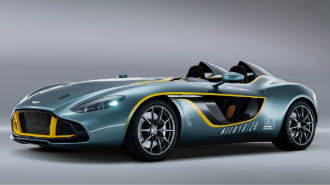 Aston Martin has cooked up an interesting but rather unusal speedster concept, designed with Aston’s racetrack heritage in mind. Aston tapped the design of its legendary DBR1 race car to come up with the CC100 Speedster, but although it has some ancient race track chromosomes, it features down to earth engineering under the bonnet.
Aston Martin has cooked up an interesting but rather unusal speedster concept, designed with Aston’s racetrack heritage in mind. Aston tapped the design of its legendary DBR1 race car to come up with the CC100 Speedster, but although it has some ancient race track chromosomes, it features down to earth engineering under the bonnet.
The concept relies on off-the-shelf components found in Aston’s current lineup, including the AM11 6.0 litre V12 and six-speed sequential gearbox. It seems that Aston reckoned the bellow of a proper V12 is a bit more important than fuel economy, and in such a car it most definitely is.
Although it was designed to pay homage to the DBR1 and mark Aston’s 100th anniversary, the CC100 has almost nothing to do with the 20th century. The interior and exterior are build almost entirely from fibre carbon, which means it is a featherweight, although Aston is not saying what it actually weighs.
Measuring just 4.5 meters long, the concept is a bit smaller than most Astons, although it shares some of its proportions with the DB9 and Vantage. However, the end result is quite different and although there is no denying that it looks spectacular, it also looks like they took it a step too far. It is over the top, but then again it is just a concept and even Aston has a right to go wild on its birthday.
It does not look like anything you are likely to see on your commute, as it’s never going into production, but it might be a sign of things to come in Gaydon’s upcoming road-going models.
Rich people prefer online shopping
 Although there are thousands of penny pinching price comparison sites out there, it seems online shopping is pretty big among affluent consumers who really don’t need to save at all. According to research released by the Shullman Research Centre, the rich love to do their shopping online. Apparently they don’t want to mix with their serfs, for whatever reason.
Although there are thousands of penny pinching price comparison sites out there, it seems online shopping is pretty big among affluent consumers who really don’t need to save at all. According to research released by the Shullman Research Centre, the rich love to do their shopping online. Apparently they don’t want to mix with their serfs, for whatever reason.
The survey found that the vast majority of affluent consumers tend to research products online and make the purchase from an online device. Most of them still rely on desktops, at 64 percent, while tablets and smartphones are used by 18 and five percent respectively.
“I do not think luxury marketers are totally aware that [consumers] are using online for research and are getting comfortable buying that way,” said Bob Shullman, founder and CEO of the Shullman Research Center. He added that consumers enjoy convenience and that is exactly what online shopping is supposed to deliver.
To some extent it sounds a bit counter intuitive, as one would expect people to actually touch and feel upmarket merchandise before reaching for their credit card, but in reality just 10 percent of affluent consumers said they prefer researching in-store as opposed to online. Furthermore, 62 percent said they are comfortable using online services to buy stuff, while just 33 percent said they felt comfortable buying in person at a brick and mortar store.
However, rich people don’t shy away from mass marketed products, either. The survey found that 73 percent of them made purchases on Amazon in the past year, which means Amazon is the top service for rich folk and proles alike.
Half of men prefer gaming to sex
 A survey seems to indicate that half of British men have rather strange priorities. VoucherCodesPro.co.uk polled 1,442 men and found that half of men in relationships would rather play a new computer game than have sex with their partner. We feel the need to emphasise the “their partner” bit.
A survey seems to indicate that half of British men have rather strange priorities. VoucherCodesPro.co.uk polled 1,442 men and found that half of men in relationships would rather play a new computer game than have sex with their partner. We feel the need to emphasise the “their partner” bit.
According to the survey, 49 percent of Brits would rather take the wraps off a new video game than take the lace off their significant others. 32 percent said they would rather make love not war, while 19 percent say it really depends on the game, which for some reason seems more demeaning and insulting that just saying no.
Gamers tend to be a rather picky lot, so it is not surprising that some games are more equal than others. GTA 5 tops the list, as 71 percent would choose it over sex. Football lovers are not far behind, as 67 percent would rather play out their Premiership fantasies in FIFA 14 than have sex. Elder Scrolls Online ranked third with 55, although we doubt that RPG fans have sexual partners. Well, at least real flesh and blood ones.
The survey also found that 30 percent of participants believe their partner wouldn’t expect them to make such a choice, but more surprisingly 18 percent said their partner wouldn’t be surprised. Which begs the question, how on earth are those 18 percent in relationships to begin with?
WD ships first 5mm 2.5-inch drives
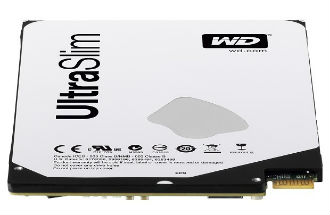 Western Digital has started shipping the world’s first ultraslim 2.5-inch drives, designed specifically to meet the needs of Ultrabook vendors and makers of all things thin.
Western Digital has started shipping the world’s first ultraslim 2.5-inch drives, designed specifically to meet the needs of Ultrabook vendors and makers of all things thin.
Measuring just 5mm at the waistline, WD’s new drives should enable even thinner devices, but as an added benefit they are quieter and more efficient than 7mm and 9.5mm drives. The new ultraslims also usher in a new era for WD, as they are the company’s first big foray into the hybrid drive market.
Seagate pioneered the hybrid drive market a couple of years ago with its Momentus XT series. It was only a matter of time before Western Digital entered the market and earlier this year they showed off their first SSHD designs. They were followed up by 5mm slim WD Black SSHD products. Mechanical 5mm drives will be marketed under the WD Blue brand.
“With the launch of our new WD Blue 5 mm ultra slim hard drives and our WD Black SSHD products, currently shipping to OEMs, WD is delivering to our customers a variety of solutions that maximize storage capacity and volumetric efficiency, as well as performance and system responsiveness, for consumers,” said Matt Rutledge, vice president of WD’s client computing business unit. “Our engineering team took a clean-sheet approach with 5 mm to deliver an ultra-thin hard drive that enables a world of possibilities and applications for mobile computing and beyond.”
Although SSDs are slowly emerging as the preferred choice for Ultrabooks and high performance notebooks, the medium range and low end are still dominated by traditional hard drives, with a few proprietary hybrid solutions here and there, usually found in budget ultrathins powered by AMD low voltage chips and a few cheap Intels.
Hybrid drives offer substantial performance gains over traditional HDDs, at the fraction of the cost of proper SSDs. This is what is starting to make them increasingly appealing for system integrators and end-consumers alike.
Although Western Digital’s first 5mm are shipping to disties and OEMs as we speak, they are still available in a single capacity, 500GB. The mechanical WD Blue drive is priced at $89, but WD did not release the price of the WD Black hybrid unit.
The downside? WD’s ultraslims feature a new proprietary connector, as the standard SATA and DC plugs are simply too big for 5mm drives.
European PC market continues downward spiral
 The global PC market contracted 13.9 percent in the first quarter of 2013 and Europe seems to have taken the worst hit. Sales of PCs in Western Europe fell off a cliff in the first three months of the year and they are down 20.5 percent year-on-year. Big brands like Acer and HP did even worse, experiencing a drop in excess of 30 percent.
The global PC market contracted 13.9 percent in the first quarter of 2013 and Europe seems to have taken the worst hit. Sales of PCs in Western Europe fell off a cliff in the first three months of the year and they are down 20.5 percent year-on-year. Big brands like Acer and HP did even worse, experiencing a drop in excess of 30 percent.
